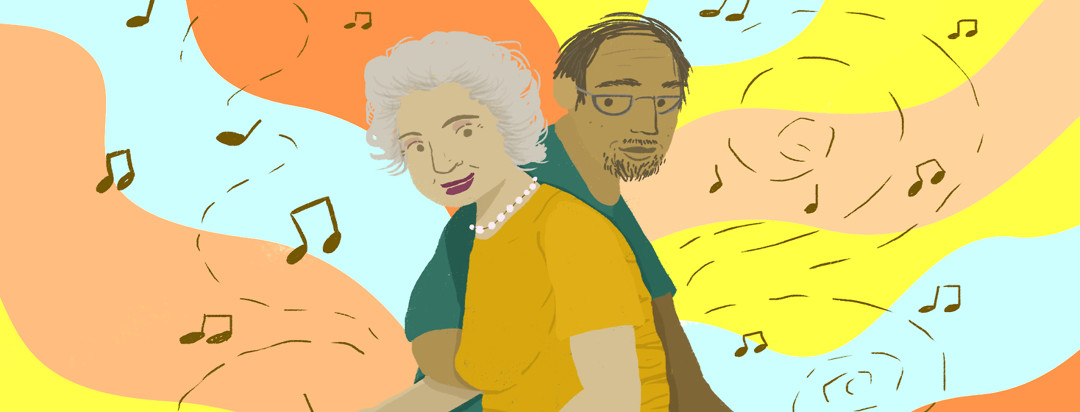Dancing Your Way to a Better Quality of Life with Parkinson's
As anyone with Parkinson's disease (PD) knows, PD is a chronic, degenerative movement disorder that can greatly affect quality of life. But in my alternate career as a dance fitness instructor, I was privileged to observe firsthand the many benefits of dance for people with PD.
Over the coming months, I hope to share about dance and PD from a number of different perspectives. But for this post, I thought I'd lay a foundation for the benefits of dance therapy for Parkinson's.
PD causes debilitating motor symptoms, such as:
- Tremors
- Slowed movement
- Rigidity or stiffness
- Trouble with balance and falls
There can be other symptoms as well, but those are the most common motor symptoms. But there can also be non-motor symptoms, such as cognitive changes, fatigue, and mood disorders. And unfortunately, all of these motor and non-motor symptoms can result in depression and social isolation over time. Exercise, in particular dance exercise, may be able to counteract some of these symptoms and improve quality of life.
Benefits of exercise for people with PD
Exercise is good for all of us, whether we're perfectly healthy, at risk for certain health issues or already suffering from a chronic illness. But for people with PD, exercise can be especially beneficial. In fact, the Parkinson's Foundation states that exercise is "a vital component to maintaining balance, mobility and daily living activities, along with a potential neuroprotective effect."
Here are a few specific benefits of exercise for people who have Parkinson's disease:
- Reduced motor symptoms
- Improved muscle strength and tone, along with endurance
- Less gait disturbances
Exercise can also help PD patients be more active participants in their care. That can help alleviate some of the non-motor symptoms and improve quality of life overall.1
Benefits of dance in general
There are many different types of dancing. Some is more social, such as line dancing, folk dancing or ballroom dancing. Dance fitness, such as Zumba, is another type of dance that is aimed specifically at building functional fitness. There are also dance therapy programs, often aimed at specific types of health issues.
According to a literature review done by researchers out of the University of Hawaii in 2017, dance has some specific health benefits, including:2
- improves muscular strength and endurance
- promotes better balance
- improves other aspects of functional fitness
This review also showed significant positive changes in cognitive ability. There was a 21-year study of senior citizens, 75 and older, funded by the National Institute on Aging. It was conducted by the Albert Einstein College of Medicine in New York City and published in the New England Journal of Medicine in 2003.6 The study looked at a number of leisure activities, but found that dancing was the only one to offer significant protection from the risk of dementia.
Plus, let's not forget that dancing to music that resonates with you can just be plain fun, no matter your age or gender.
Benefits of dance for people with PD
In the past couple of decades, more and more research has been done studying how different forms of dance might be helpful in treating PD. In fact, the Dance for PD website lists 38 scientific research studies on this topic. Research shows that dance can be especially beneficial for those with mild to moderate PD.3,4
Dance appears to be very helpful in improving gait and balance in Parkinson's patients. It also can provide social stimulation and support, which can be helpful in reducing depression and improving quality of life. Plus, dance stimulates cognitive functioning, an area that PD patients often struggle with.
It should also be noted that dance always involves music. This combination of movement to music can be powerful.
What type of dance is best for PD?
As a fitness instructor, my answer is always going to be that the best type of dance for PD is the type that you will actually practice consistently. It won't benefit you if you don't do it. Most of the studies mentioned above found that the benefits of dance for PD patients came from doing it regularly over a period of weeks.
Every person with Parkinson's is different. Not all PD sufferers have the same exact set of symptoms, nor will they respond identically to a certain form of dance. Here are a few types of dance that have been shown to have specific value for people with PD.
- Tango. One small research study suggested that tango might be a strategy for improving functional mobility deficits. Tango can involve learning specific ways of moving that might improve gait and balance.5
- Dance for PD. These are specific classes taught by professional dancers. These classes include modern dance, ballet, tap, folk and social dancing. Emphasis is on experiencing "the joys and benefits of dance while creatively addressing symptom-specific concerns related to balance, cognition, motor skill, depression and physical confidence."
- Zumba Gold.Zumba is a dance fitness program that combines these elements of fitness: cardio, muscle conditioning, balance and flexibility, choreographed to Latin and world music. The Gold version of Zumba is a lower-intensity, low impact version that emphasizes balance and coordination, along with social interacton.
In summary
If you've ever tried a dance class, you may already know what addictive fun it can be. When you consider the many possible benefits in alleviating both motor and non-motor symptoms, it can definitely be a WIN-WIN for people who have Parkinson's disease.
I would encourage you to get out and try some form of dance. What do you have to lose? You just might gain more self-confidence, a better outlook on life and a few new friends.
NOTE: Future posts will focus more specifically on some of the different options for dance exercise for PD.

Join the conversation